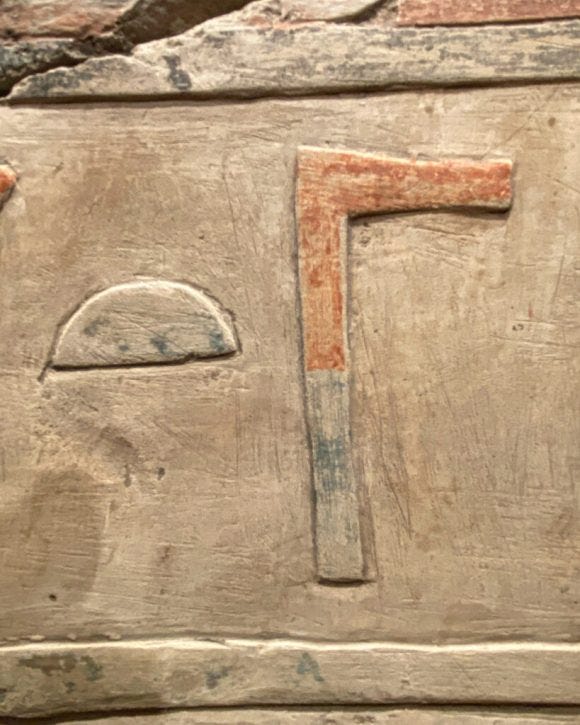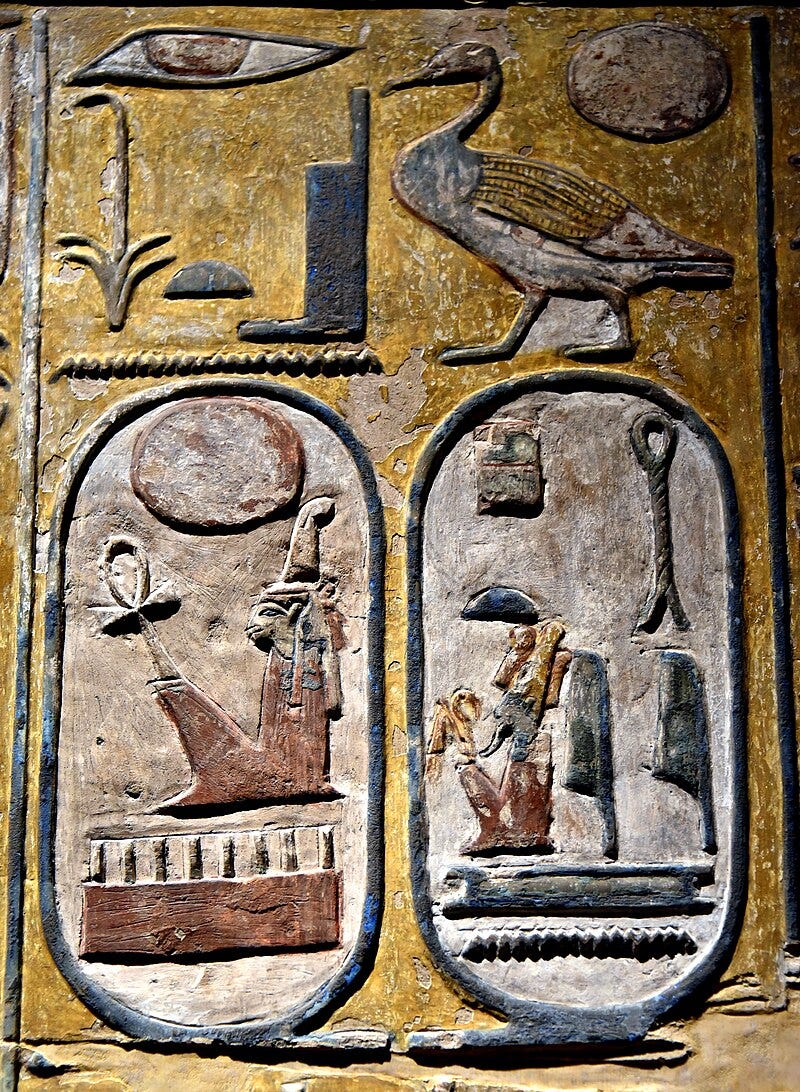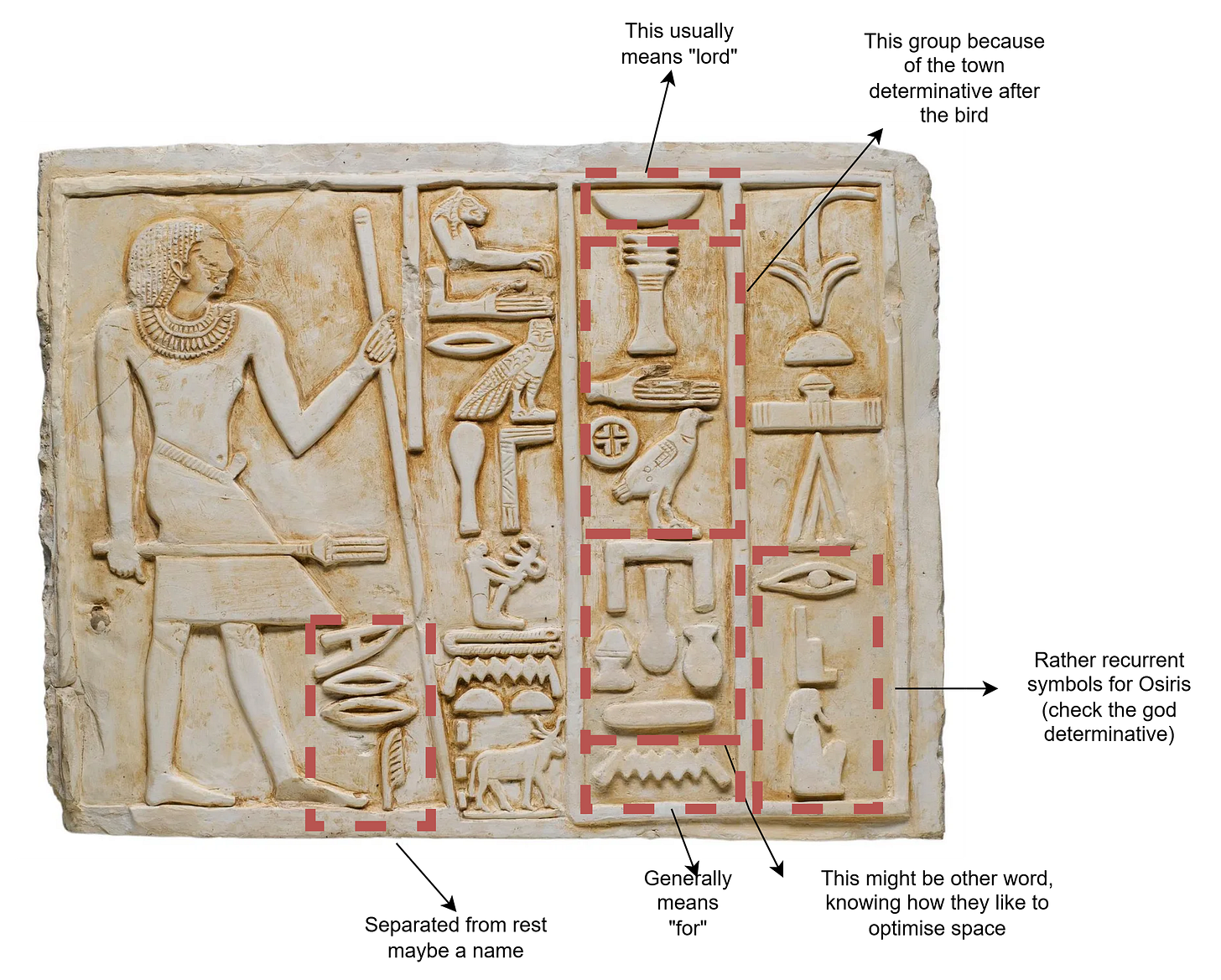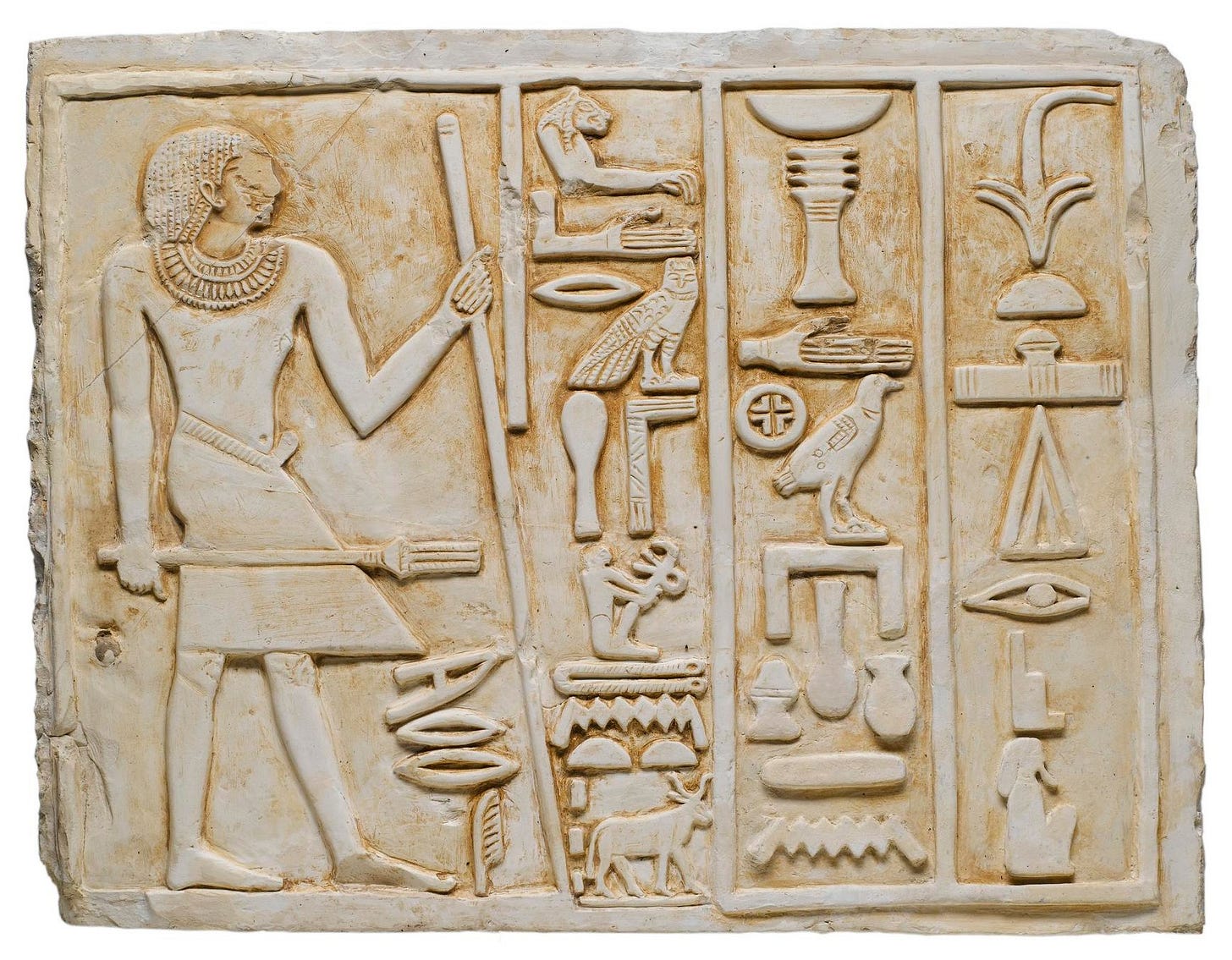Remember that feeling as a child, staring at pictures of Ancient Egypt? Mummies, pyramids, golden treasures... and those fascinating, intricate drawings lining the walls – hieroglyphs. They felt like a secret code, a magical way people long ago used quirky pictures to talk to each other. That sense of wonder is what draws many of us in.

Let's be clear: This isn't a "learn hieroglyphs overnight" guide – far from it! Think of this more as sharing the initial sparks, those foundational concepts that start to unlock the system. It's a simple sketch of the very basics, hopefully offering a starting point if you feel inspired to embark on the amazing task of learning more yourself.
Theory
What Exactly Are Hieroglyphs?
The word "hieroglyph" itself gives us a clue. It comes from Greek, meaning "sacred carvings." This is spot-on, as they were initially etched onto temple walls, tombs, and official monuments – places and documents of great importance, often religious or governmental.
But Wait, It's Not Just Pictures, Right?
Exactly! This is the first hurdle to clear. While they look like pictures, hieroglyphs form a complex writing system. Think of it like this:
These are called phonograms. They represent sounds, much like our alphabet letters. Some represent a single consonant sound (like the examples in the chart below, which correspond to sounds familiar from English [1]). Others can represent a sequence of two or even three consonants!
Some signs represent whole words or ideas: These are ideograms. The picture directly relates to the meaning.
Some signs help clarify meaning (like category tags): These are determinatives. They aren't pronounced but are placed at the end of a word to show what kind of word it is (e.g., adding a man symbol after a name written phonetically).
Often, a single word uses a combination of these! It’s this blend that makes hieroglyphs so rich and, yes, a little complex at first glance.
Making Things Plural: More Than One
How did Egyptians show there was more than one of something? Often, it was quite visual! There were two common ways:
Tripling the Sign: They might simply draw the hieroglyph three times. For example, drawing three house signs (𓉐𓉐𓉐) could mean "houses." (Three represented 'many').
Plural Strokes: Alternatively, they often added three small vertical strokes (𓏥) or sometimes horizontal strokes underneath or after the singular sign to indicate plurality. Think of them like a little tag meaning "more than one."

He Said, She Said: Masculine and Feminine
Like many languages, Ancient Egyptian nouns had gender (masculine or feminine). While you often need context, there's one very common clue for feminine words:
The Feminine 'T': Feminine nouns and adjectives very often end with the sound 't', represented by the bread loaf hieroglyph (𓏏). If you see that little half-circle at the end of a word (especially relating to a female figure 𓁐 ), it's often marking it as feminine.
Masculine words generally don't have a specific ending like this, so the absence of the 't' ending (or context clues like male determinatives) often implies masculine.

The Million-Dollar Question: Which Way Do I Read?
This is often the most baffling part for beginners. Unlike English, hieroglyphs are flexible! They can be written:
➡️ Right to Left (Most common on monuments)
⬅️ Left to Right
⬇️ Top to Bottom (in columns)
So how do you possibly know where to start? Look at the figures! Animals, birds, and people depicted in the hieroglyphs will almost always face the beginning of the line.
If the bird is looking left (𓅱), read Left to Right.
If the bird is looking right, read Right to Left.
Simple, once you know the trick! This immediately helps you orient yourself when looking at an inscription.
Spotting Royalty: The Cartouche
Beyond individual symbols like the Ankh (𓋹), you'll quickly notice another distinctive shape appearing in many inscriptions: an oval loop with a straight line at one end, looking a bit like a rope tied off. This is called a cartouche (a French word meaning 'cartridge', which Napoleon's soldiers thought they resembled).

What's so special about this shape? It encircles royal names. Whenever you see a cartouche, you know you're looking at the name of a pharaoh (or sometimes a queen). The loop was thought to magically protect the powerful royal name enclosed within it.
Pharaohs typically had several names, but two main ones were regularly written in cartouches: their throne name (taken upon coronation) and their birth name. Spotting these cartouches is like finding a royal signature on a monument or artifact. Think of perhaps the most famous example: Tutankhamun. His instantly recognizable golden mask and sarcophagi are covered in cartouches bearing his names.
So, keep an eye out for this special oval – it’s a big clue that tells you who the inscription is talking about, especially when dealing with royalty!
Okay, now that we've covered some key theoretical concepts, let's try applying them to a real example!
Putting Theory into Practice: The Stela of Mereri
Alright, let's take the theory for a spin with a real artifact. This is a limestone stela (a carved stone slab) from the tomb of Mereri, a governor from Egypt's First Intermediate Period (around 2160-2040 BCE).
First things first: which way do we read? Remember our rule? Look at the figures!
Examine the hieroglyphs within the columns of text. Notice the birds (like the quail chick 𓅱 or the owl 𓅓), the seated god figure, and even the main large figure on the left.
Which way are they all facing? They are facing right➡️.
Therefore, we read this inscription starting from the rightmost column, moving left, and within each column, we read from top to bottom.
Great! You've successfully navigated the first challenge.
Look closely at the columns again. The signs aren't just randomly scattered. Scribes arranged them neatly, often fitting them into invisible squares or rectangles. This makes the text compact and visually balanced. Within a single column, you read the signs from top to bottom. If two signs are side-by-side horizontally within that top-to-bottom flow, you generally read the upper one first if there's a vertical difference, or follow the main direction (right-to-left in this case) if they are truly beside each other.
Now, let's see if we can spot some elements we discussed earlier, even without knowing the full vocabulary.

For the rest probably we need to know more vocabulary or use a dictionary. However, check what you can do after reading up to this point. From a simple hieroglypic we can deduce:
The direction of writing (Right-to-Left, Top-to-Bottom).
How signs are grouped aesthetically and grammatically.
Examples of determinatives clarifying the meaning of words (god, man).
That's significant progress! You've moved from seeing hieroglyphs as just mysterious pictures to actively analyzing their structure and extracting basic information.
The Full Picture
Seeing the translation helps put it all together. The main text here is a classic offering formula [1]:
An offering which the king gives Osiris / lord of Djedu: a voice offering for / the governor, overseer of priests, guardian of the temple cattle / Mereri
You can see how the text asks the gods (Osiris) for offerings on behalf of Mereri, listing his titles (3rd column).
[1] Manley, B. (2016). Egyptian hieroglyphs for complete beginners. New York, NY: Thames & Hudson.
[2] Check this for a List of Egyptian hieroglyphs.





